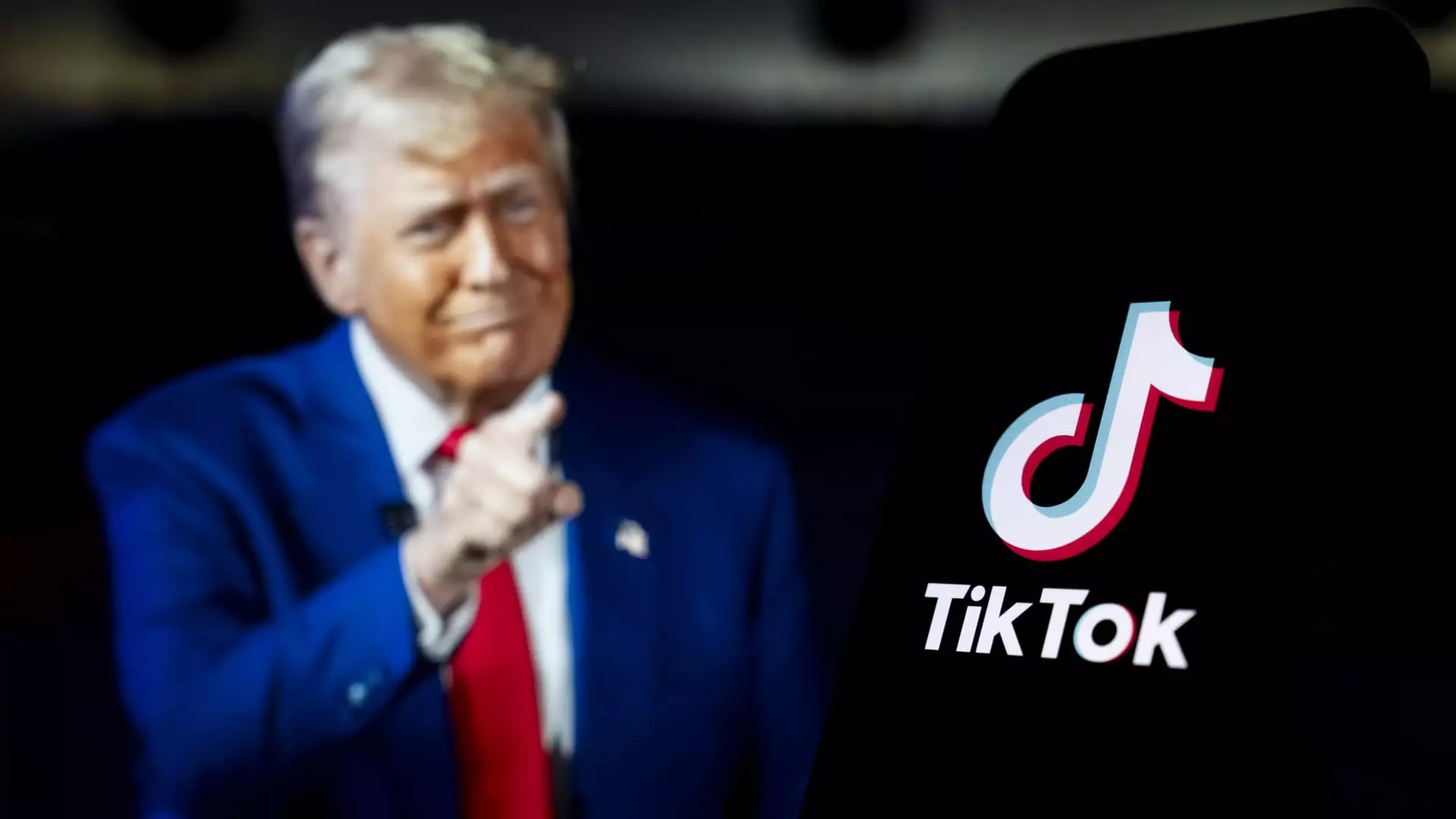TikTok, a platform that has revolutionized the social media landscape, recently faced a significant setback when its services were temporarily halted in the U.S. The fallout was dramatic—a staggering 85% drop in usage, prompting an urgent need for recovery. However, recent data from Cloudflare Radar indicates that TikTok has made remarkable strides toward regaining its user base, showing a mere 10% dip below pre-shutdown traffic levels. This situation not only reflects the app’s powerful grip on its audience but also highlights the adaptive nature of social media over the tumultuous waters of legal and regulatory challenges.
The abrupt shutdown of TikTok in the U.S. stemmed from a Supreme Court ruling that reinforced legislation mandating the Chinese company ByteDance to divest its stakes in the app. The law was signed by former President Joe Biden and posed looming threats of a complete ban on January 19 unless compliance was achieved. The swift removal of TikTok from major app stores by tech giants Apple and Google was a direct response to this decree, igniting fears among creators and users alike. This governance issue raises broader questions about national security, digital sovereignty, and the future of foreign-owned social media platforms in the U.S.
After approximately 14 hours offline, TikTok was reinstated when President Trump postponed the enforcement of the ban, granting a temporary reprieve. Despite the brief suspension, creators and users exhibited remarkable loyalty, with many returning to the platform at a rapid pace. The surge in DNS traffic observed post-reopening reflects an inherent familiarity and comfort with TikTok, suggesting that its engagement model has deeply embedded itself within the modern digital experience. As the app regained traction, alternative platforms like RedNote (Xiaohongshu) also experienced heightened interest, further showcasing the competitive landscape within the domain of short-form content.
Interestingly, the landscape of social media alternatives gained momentum during TikTok’s brief absence. Observations indicate that platforms like RedNote saw a spike in traffic even before the shutdown, as users began looking for substitutes. However, TikTok’s return immediately diminished the surge in activity for competitors, illuminating the challenges these platforms face in attracting and retaining the extensive audience currently flocking to TikTok. Content creators have indicated that while they have made efforts to establish their presence across multiple platforms, the unique community dynamics of TikTok have proven difficult to replicate elsewhere.
In light of the instability regarding TikTok’s future, many creators are diversifying their platforms to maintain their influence and income. Dylan Lemay, a creator boasting over 10 million followers, has embraced this pivot, finding success on YouTube, where he has cultivated an audience of 5.6 million subscribers. This proactive approach is indicative of a growing trend among TikTok influencers who recognize the necessity of establishing a safety net in the ever-evolving digital landscape. On the flip side, some creators, such as Noah Glenn Carter, have reported difficulties in replicating their TikTok success on platforms like Instagram and YouTube. The reflections from these experiences offer valuable insights into the challenges of cross-platform engagement, highlighting the unique characteristics of content that may not translate seamlessly across different viewers.
As TikTok’s long-term position in the U.S. remains uncertain, the sentiment among creators is one of cautious optimism. While some remain skeptical regarding TikTok’s permanence, others contend that the platform has built a robust infrastructure that cannot easily be dismantled. Creators are now navigating their brand partnerships with modifications, as brands adapt to a landscape where TikTok’s sustainability hangs in the balance. Meta’s initiative to entice creators from TikTok to promote its own platform underscores the competitive tension and the ongoing struggle for creators to maintain their livelihood in this rapidly shifting digital domain.
TikTok’s turbulent journey illustrates the complex interplay between innovative social media engagement and the powerful forces of regulatory oversight. As the app navigates its path through legal uncertainties, its ability to quickly rebound demonstrates not only the app’s intrinsic value to its users but also the larger narrative of adaptability within social media ecosystems. With many creators diversifying their online presence, the implications of these shifts will continue to unfold, heralding a new era of resilience and evolution in the digital landscape. The future remains uncertain, but one truth prevails: the community that TikTok has fostered is not easily overshadowed.

